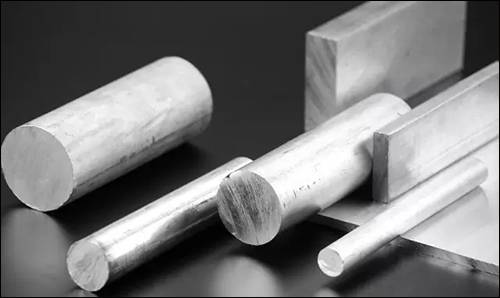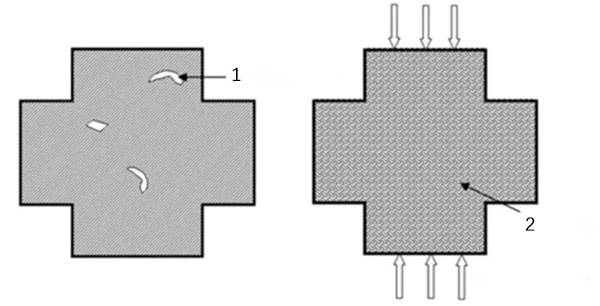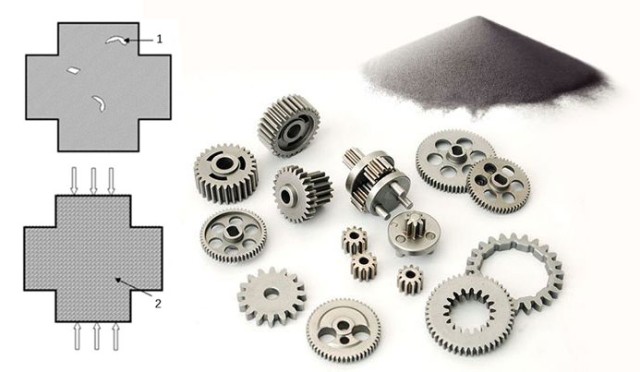Historical Development and Technological Advancements
Origins and Early Applications
Hot isostatic pressing (HIP) emerged in the 1950s, initially finding its niche in the realm of atomic energy reactions. This innovative technique was designed to apply uniform pressure and heat to materials, thereby enhancing their structural integrity and performance. The early applications of HIP were primarily centered around the nuclear industry, where the need for materials with exceptional strength and durability was paramount.
The mid-1960s marked a significant turning point with the development of gas atomization technology. This advancement revolutionized the process of creating metal powders, which are essential for many industrial applications, including HIP. Gas atomization allowed for the production of finer and more uniform metal powders, significantly improving the efficiency and effectiveness of HIP processes. As a result, the technology saw rapid growth and began to be adopted in various other industries beyond nuclear energy.
The synergy between HIP and gas atomization laid the foundation for future innovations in material processing, paving the way for the versatile applications that HIP enjoys today across a myriad of fields.
Impact on Alloy Technology
Hot Isostatic Pressing (HIP) has revolutionized the traditional pathways of alloy production, offering significant advancements in both mechanical properties and production efficiency. By circumventing conventional casting and forging methods, HIP introduces a more controlled and uniform process that enhances the overall quality of the final product.

One of the primary benefits of HIP in alloy technology is its ability to improve mechanical properties. This is achieved through the densification of materials, which reduces internal porosity and eliminates defects. The high-pressure and high-temperature environment of HIP induces plastic deformation, creep, and diffusion within the material, leading to a more homogeneous microstructure. This results in superior mechanical strength, ductility, and fatigue resistance compared to traditional methods.
Moreover, HIP accelerates production cycles by streamlining the manufacturing process. Traditional methods often require multiple steps and lengthy processing times to achieve the desired material properties. In contrast, HIP consolidates these steps into a single, efficient operation, significantly reducing the time required from raw material to finished product. This not only increases production throughput but also lowers costs, making it an economically viable option for manufacturers.
In summary, HIP has not only broken the mold of traditional alloy production but has also set new standards in terms of material quality and production efficiency. Its ability to enhance mechanical properties and accelerate production cycles makes it an indispensable technology in the modern alloy industry.
Technical Principles and Mechanisms
Equipment and Process
Hot Isostatic Pressing (HIP) relies on a sophisticated array of equipment to achieve its densification and sintering objectives. The core components of HIP equipment include a high-pressure vessel, a heating furnace, a compressor, a vacuum pump, a cooling system, and a computer control system. Each of these elements plays a crucial role in the HIP process, ensuring that the material undergoes the necessary transformations under controlled conditions.
The process of HIP involves several critical steps. Initially, the material is placed within the high-pressure vessel, which is then sealed and evacuated to create a vacuum. This step is essential as it removes any residual gases that could interfere with the subsequent processes. Once the vacuum is established, the vessel is filled with a pressurizing medium, typically an inert gas like argon, which applies equal pressure from all directions.
Simultaneously, the heating furnace within the vessel is activated, raising the temperature to the required level for sintering and densification. The combination of high temperature and uniform pressure is what distinguishes HIP from other sintering techniques. This dual action induces plastic deformation, creep, and diffusion within the material, leading to the closure of pores and the enhancement of density.
After the densification process is complete, the cooling system gradually reduces the temperature within the vessel, ensuring that the material cools uniformly without inducing thermal stresses. Finally, the computer control system monitors and adjusts all parameters throughout the process, ensuring precision and consistency. This integrated approach ensures that HIP can achieve high-quality results across a wide range of materials, from metals to ceramics and polymers.
Densification Mechanisms
Under high temperature and pressure conditions, the internal defects within materials undergo significant transformations. These transformations include plastic deformation, creep, and diffusion processes, which collectively contribute to the healing of pores and the overall increase in material density.
One of the primary mechanisms is rearrangement, where capillary action pulls the liquid phase into pores, causing the grains to realign into a more favorable packing arrangement. This process not only fills voids but also optimizes the spatial distribution of particles, enhancing the material's structural integrity.

Another crucial mechanism is solution-precipitation. In regions with high capillary pressures, atoms dissolve and then precipitate in areas of lower chemical potential. This phenomenon, known as contact flattening, densifies the system similar to grain boundary diffusion in solid-state sintering. Additionally, Ostwald ripening occurs, where smaller particles dissolve and precipitate onto larger particles, further promoting densification.
| Mechanism | Description |
|---|---|
| Rearrangement | Capillary action pulls liquid into pores, causing grain realignment. |
| Solution-precipitation | Atoms dissolve in high-pressure areas and precipitate in low-pressure areas. |
| Ostwald ripening | Smaller particles dissolve and precipitate onto larger particles. |
These densification mechanisms are fundamental to the effectiveness of hot isostatic pressing (HIP) in enhancing material properties and performance across various applications.
Applications Across Various Materials
Powder Metallurgy
Hot Isostatic Pressing (HIP) is a transformative technology in the realm of powder metallurgy, significantly enhancing the performance and material utilization of alloys such as nickel-based, titanium-based, and tungsten-based materials. This process plays a crucial role in the manufacturing of precision parts by bonding powdered metals and alloys under extreme pressure and high temperatures, a method that has been refined over centuries from its ancient origins to modern industrial applications.
The essence of powder metallurgy lies in its ability to produce components with high precision and accuracy, minimizing material waste and reducing the need for traditional subtractive manufacturing processes. One of the standout products made through this method is tungsten carbide, a material renowned for its hardness and durability, which is extensively used in cutting and forming other metals. The production of tungsten carbide involves bonding tungsten carbide particles with cobalt, a process that exemplifies the unique capabilities of powder metallurgy in creating materials that are otherwise difficult to produce through conventional melting or forming techniques.

In addition to tungsten carbide, powder metallurgy is employed to manufacture a wide array of products, including sintered filters, porous oil-impregnated bearings, electrical contacts, and diamond tools. These applications underscore the versatility and importance of powder metallurgy in various industrial sectors, from automotive and aerospace to electronics and bioengineering.
The success of powder metallurgy is largely attributed to the sintering process, where parts are heated to temperatures just below the melting point of the primary metal. This controlled heating allows the powdered particles to bond together, forming a solid and dense structure. The integration of HIP into this process further optimizes the sintering conditions, leading to improved mechanical properties and accelerated production cycles.
By leveraging HIP, manufacturers can achieve higher densities, reduce porosity, and eliminate internal defects in their products, thereby enhancing overall performance and reliability. This makes HIP an indispensable tool in the arsenal of modern material processing technologies, particularly in industries where precision, durability, and efficiency are paramount.
Ceramics
The application of hot isostatic pressing (HIP) in ceramics significantly enhances the molding and sintering processes, leading to a substantial reduction in porosity and a marked improvement in material performance. Traditional ceramics, renowned for their thermal, mechanical, and chemical stability, have been integral to human civilization for millennia, used in everything from cooking vessels to sculpted figures. The process of forming these ceramics typically involves shaping clay, either alone or mixed with materials like silica sand, followed by drying and hardening through high-temperature sintering in a kiln.
Modern advancements in HIP technology have further refined these traditional methods. By applying equal pressure and high temperature, HIP ensures that internal defects within the ceramic undergo plastic deformation, creep, and diffusion. This results in the healing of pores and an increase in material density, which is crucial for enhancing the overall performance and durability of ceramic products. The benefits of HIP are particularly evident in the production of advanced ceramics, where the reduction of porosity translates into superior mechanical strength and resistance to environmental factors.
In summary, HIP not only preserves the intrinsic properties of ceramics but also amplifies their utility, making them suitable for a broader range of applications in contemporary industries.
Polymer Molding
In the realm of polymer molding, hot isostatic pressing (HIP) plays a pivotal role in refining material properties. By subjecting polymers to controlled high temperatures and pressures, HIP effectively eradicates microscopic defects such as pores and cracks. This process induces a micro-flow within the material, which not only smoothens its internal structure but also enhances its overall performance.
The application of HIP in polymer molding is particularly notable for its ability to create materials with superior mechanical properties. The micro-flow induced by the combined forces of temperature and pressure allows for the redistribution of material particles, leading to a more homogeneous and dense structure. This densification process is crucial for improving the material's resistance to wear, fatigue, and environmental degradation.
Moreover, the elimination of pores and cracks through HIP significantly reduces the likelihood of stress concentrations, which are often precursors to material failure. As a result, polymers treated with HIP exhibit enhanced durability and reliability, making them ideal for applications where high performance and long-term stability are paramount.
Casting Densification
Casting densification through hot isostatic pressing (HIP) is a transformative process that addresses the inherent defects and pores present in castings. This technique is particularly effective in enhancing the structural integrity and performance of materials, making it indispensable in high-stakes industries such as aerospace, automotive, and bioengineering.
In the aerospace sector, the reliability and safety of components are paramount. HIP ensures that critical parts like turbine blades and structural components are free from internal flaws, thereby improving their durability and reducing the risk of catastrophic failures. Similarly, in the automotive industry, the use of HIP in manufacturing engine blocks and other high-stress components results in increased engine efficiency and longevity.
Bioengineering applications also benefit from HIP, particularly in the production of implants and prosthetics. The process eliminates microscopic voids and defects, leading to biocompatible devices with superior mechanical properties. This not only enhances the performance of these medical devices but also reduces the likelihood of implant rejection and subsequent corrective surgeries.
The versatility of HIP in casting densification is further highlighted by its ability to cater to a wide range of material types, from metals to ceramics. The process involves subjecting the castings to high temperatures and equal pressure, which induces plastic deformation, creep, and diffusion within the material. These mechanisms effectively heal internal defects and pores, resulting in a denser and more homogeneous material.
In summary, casting densification through HIP is a critical technology that bridges the gap between casting and forging, offering a superior alternative for producing high-quality components across multiple industries.
Other Applications
Hot isostatic pressing (HIP) extends its influence beyond traditional material processing, showcasing its versatility in a multitude of specialized applications. One notable area is the treatment of porous materials, where HIP excels in sealing micro-pores and enhancing material integrity. This process is particularly crucial in industries requiring high-performance materials, such as aerospace and medical devices, where even minor flaws can lead to catastrophic failures.

Another significant application is plasma spraying, a technique where HIP is integrated to improve the adhesion and density of coatings. By applying high pressure and temperature, HIP ensures that the sprayed layers are more cohesive and resistant to wear and corrosion. This method is widely used in the automotive and energy sectors for creating protective and functional coatings on various components.
| Application | Industry Impact |
|---|---|
| Porous Material Treatment | Enhances material integrity in aerospace and medical devices. |
| Plasma Spraying | Improves coating adhesion and density in automotive and energy sectors. |
These applications not only highlight HIP's adaptability but also underscore its critical role in advancing material performance across diverse industries.
Related Products
- Automatic Lab Cold Isostatic Press CIP Machine Cold Isostatic Pressing
- Automatic High Temperature Heated Hydraulic Press Machine with Heated Plates for Lab
- Laboratory Quartz Tube Furnace Tubular RTP Heating Furnace
- High Pressure Laboratory Vacuum Tube Furnace Quartz Tubular Furnace
- Vacuum Induction Melting Spinning System Arc Melting Furnace
Related Articles
- Application of Hot Isostatic Pressing Technology in Nickel-Based Casting High-Temperature Alloys
- Cold Isostatic Pressing (CIP): A Proven Process for High-Performance Parts Manufacturing
- Application of Hot Isostatic Pressing Technology in Special Ceramic Preparation
- Electric Lab Cold Isostatic Press (CIP): Applications, Benefits, and Customization
- Understanding Cold Isostatic Pressing and Its Applications




















